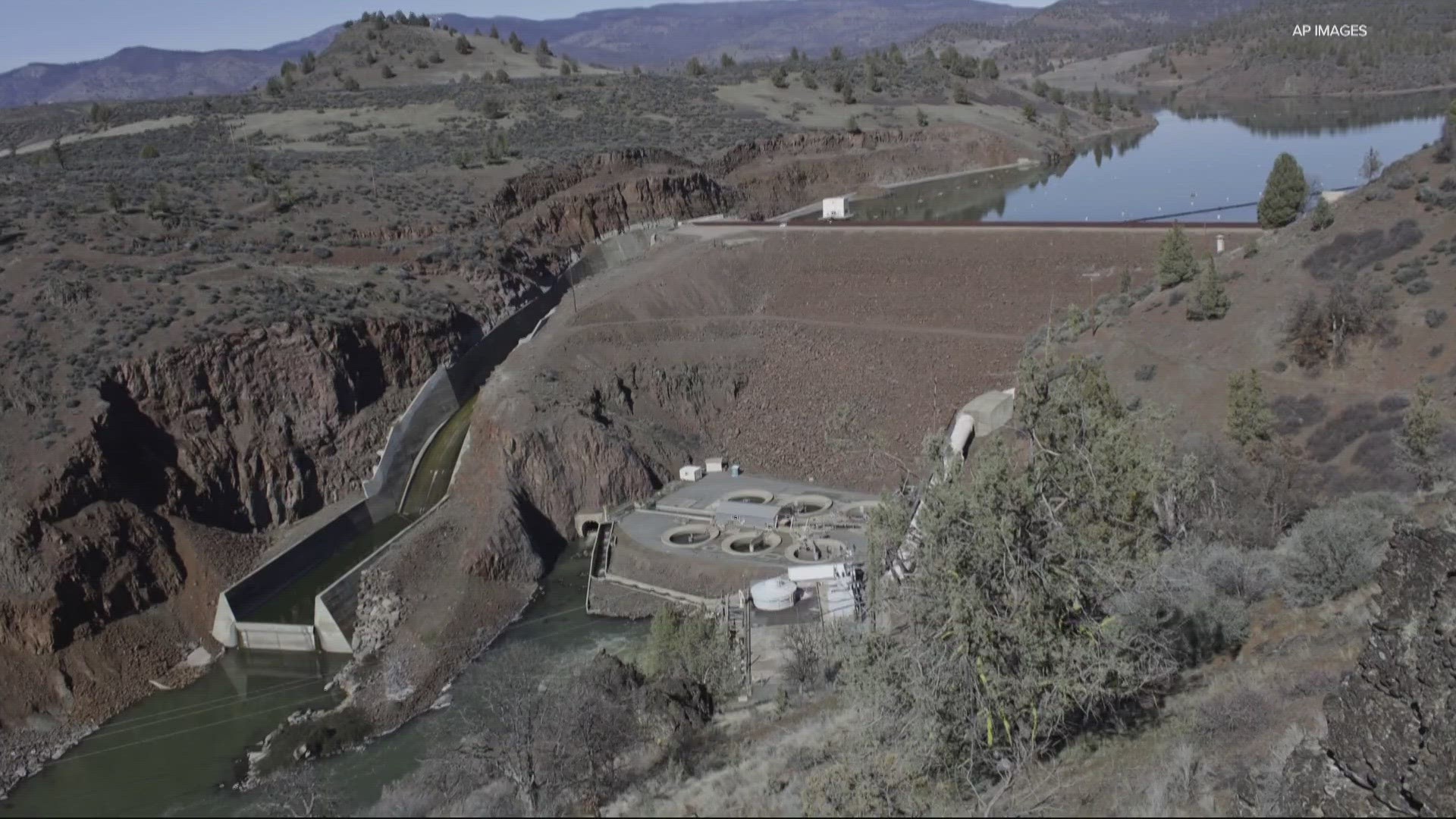PORTLAND, Ore. —
After decades of lobbying by tribes and environmental advocates, the process of removing four dams on the Klamath River in Oregon and California finally got underway last week.
The dams, some of which are more than 100 years old, serve very little purpose at this point, said Brian Johnson, chairman of the Klamath River Renewal Corporation.
“These dams provide no irrigation for agriculture, are not operated for flood control, and generate very little power,” Johnson said in a statement. “But they do play a huge role in the decline of Pacific salmon. This project aims to fix that.”
The $450 million project will restore 38 miles of the Klamath through the Iron Gate Dam, the J.C. Boyle Dam and two smaller dams called Copco 1 and Copco 2.
But the removals will open up much more habitat for salmon, which have been struggling with low river flows and high water temperatures as drought has gripped much of northern California and Southern Oregon.
Fall-run Chinook have been hit particularly hard on the Klamath, the third-most productive salmon river on the west coast. The species has declined to such low numbers that ocean fishing for fall-run Chinook was cancelled this spring in California and most of Oregon.
The situation is dire enough that fishery managers are considering cancelling the season for the remainder of the year.
That’s why tribes in the Klamath watershed have been pushing for the removal of the dams for decades. Wendy Ferris, who sits on the board of the Klamath River Renewal Corporation and is a member of the Hoopa Valley tribe, said Indigenous people see the land as an integral part of their religion.
“When we talk about ‘What does restoring this river system mean?’ It’s basically the first phase of bringing back our religion to a healthy state and being able to have healthy people and live in balance,” Ferris said.
Russell Attebery, tribal chairman of the Karuk Tribe, said that removal of the dams was a long time coming.
“Many people told us this day would never come,” he said. “Well, it’s here now and the salmon are coming home. I can tell you this is just the beginning. There’s a lot more restoration coming to the Klamath Basin.”
Some of that restoration work has already begun.
Once the reservoirs behind the dams are drained, there will be roughly 2,200 acres of land that will need to be restored. For the last several years, tribal members and others have been collecting native seeds – some 17 billion of them – so the areas can be replanted with the same vegetation that grew there previously.
While the dam removal will technically only impact less than 40 miles of the Klamath River, it will open up access to roughly 400 miles of salmon spawning habitat in cold, spring-fed tributaries off the main stem of the river.
“We’re going to unlock an amount of salmon habitat, high-quality habitat, that hasn’t been available to these fish for over a hundred years,” said Dave Coffman, a director with Resource Environmental Solutions, which is helping lead the restoration work. “Hopefully they’re as excited as we are to get them back in there.”
The smallest of the dams, Copco 2, is expected to come down this summer, with the remaining three slated for removal by the end of next year.


